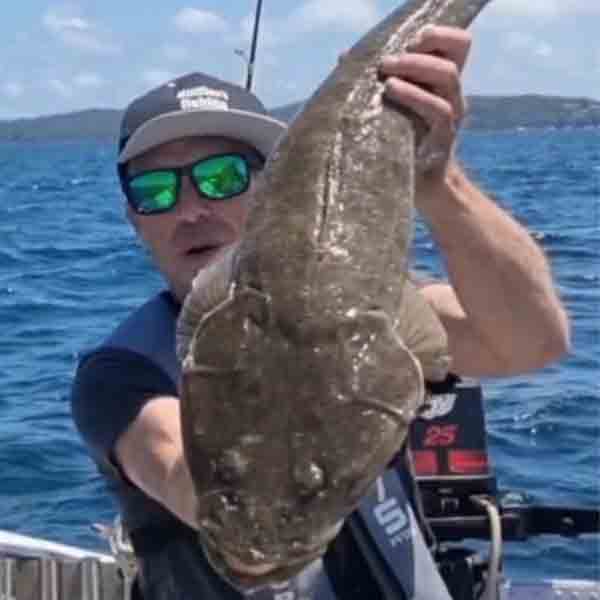
How to Catch Flathead in Australia
🔔 Get the Best Soft Plastics for Bream & Flathead!
Shop our most popular soft plastics today:
✅ Bottom Bug – Realistic Crayfish Lure
✅ Squideez Soft Plastic – Perfect for finesse estuary fishing
✅ Bullet Prawn – Irresistible prawn action for flathead
📦 Fast Aussie Shipping – Order Now!
Flathead is a popular fish and there are many anglers out there vying for a chance at a catch. It is an opportunist predatory feeder that eats a variety of prey including small fish and crustaceans like shrimp and crabs. During the warmer months they are numerous and easy to catch.

There are many species of flathead but they overall have the same behaviour and habits. Flathead can be found mostly at the bottom of the water column as they are a bottom predatory fish. Flathead prefer rocky reefs near shore, sandy beach areas in rips and gutters, sand flats, mud flats, rivers, and estuary systems.
Flathead fishing can be excellent in shallower water where wading is an option. Wading the sand flats is one of my favourite methods of fishing for flathead. Lures cast to transition patches have a great effect on the run out tide or the incoming in my experience. Surface lures work best in sand flats and shallow estuary conditions in around a metre of water. At low tide flathead lies, or indentations where they were hiding, can be seen sometimes in great numbers. occasionally you will see a trophy sized flatty lie.
Fishing from shore for flathead often the best methods are soft plastics and bait rigs. Whichever method you use target transition structure like where sand, rocks, and grass meet. Fishing from the beach concentrate on the mouths of gutters where they meet rips. Use enough weight to get the bait or lure out and down but not so much as to hold it tight on bottom. Drift the bait slowly for covering the most ground and a natural presentation.
Lures that mimick baitfish in size and colour like mullet, yakkas, herring, and livies are best. Soft plastic lures, stick baits, slice jigs, and vibes that mimick natural baitfish are good choices. There are even a few diving prawn lures that work well for flathead fishing. Dusky flathead and other flathead are ambush predators and camouflage well in sand banks and reef bottoms. They like to hide along the transition edges of weed beds, sand, and reef.
Soft plastics 50 to 90mm work well rigged on triangle jig heads. Casting out and bouncing it back along bottom on the retrieve works well. Diving stick baits are also very good at covering shallow water in the flats and estuaries. Diving lures and soft plastics cover a lot of area for maximum bottom coverage in these areas.
Snorkeling I have seen many big flathead sitting just under a sharp sandy dropoff to deeper water on outgoing tides but these areas are long and structureless which makes them hard to target.
It's quite possible to catch a lot of flathead in Australia with a hook and bait. Cut bait, shrimp, whole dead or live baitfish work well. Whole livies or whole dead market fish on bottom is a great method for hunting the big three metrey flatties. Sandworms and squid work well surf fishing the rips and gutters.
Bait on a running ball or paternoster rig sitting on bottom works well for flatties. With both methods you are likely to catch other species too like bream and snapper.The hook size can make a difference in what you reel in. Large hooks will bring a lot of false strikes from smaller fish. If you don't want to deal with smaller fish use a larger hook.
Flathead have a large mouth and using a large Octopus or Suicide hook will reduce bycatches but will cause you to lose smaller fish frequently. Large baits will catch large fish so a larger hook is needed when targeting big flathead. Size #7/0 or #8/0 is commonly used targeting big flatties. Mixed bag fishing sessions would be better off using a #3/0 or #4/0 so that bycatch could be more easily caught.
A combination of bottom fishing and throwing slice jigs can be a deadly tactic for flathead. Yakkas, bonito, and other baitfish will hit small microjigs. These can in turn be baited on a larger rod setup and throw out for flathead. A small bucket with an aerator will help keep baitfish alive or changing the water regularly will accomplish the same thing. Casting a slice jig also helps increase the fun factor when out for a fishing session.
There is no one-size-fits-all tackle setup for flathead. However, by using a variety of techniques including bait, soft plastics, vibes, and slice jigs you can increase your chances of catching flathead in Australia. By using different lures and baits you can find the one that is most effective for your conditions. One day bait might be king but the next day they may only want to hit a particular colour soft plastic. Keep trying till you find the fish.
Braid line is a good choice for some kinds of fishing for flathead. I prefer braided line with a fluorocarbon leader fishing the estuary from a boat or wading the sandflats. Surf fishing braided line can be a hassle because it gets knotted and tangled easily in the surf. Monofilament is a good choice in the surf if you don't like untangling knots in your line.
Flathead have raspy teeth like coarse sandpaper. They don't have sharp teeth like tailor do, thankfully. Flathead can be lip gripped by hand but be prepared for having your thumb grated down by the time you land a good size one. Behind the pectoral fins on flathead are some sharp spikes or barbs that will cut you rather easily. Be careful handling flathead to avoid being cut. Gloves or a wet towel will greatly aid in handling fish if need be.
The best tactic that you can use to land a good size of fish is a dipnet. This can be most effective if you are targeting larger flathead. Mechanical lip grips work but you need to support the fish with your other hand under the belly of the fish to avoid injury. Larger fish hung by their lower jaw can cause fatal injuries.
When you do catch flathead you're not keeping be sure to release them back into the water as quickly as possible so that they do not suffer from stress or injury.
Follow rules about size limits and catch limits. Many fishos release larger fish as they tend to be females in order to help their numbers. Even though commercial fisheries may not release large egg laying females doesn't mean we should totally avoid conservation methods. Catch all you want and keep what you need and release the rest. Flathead fishing is fun and something we can look forward to doing for generations to come.
Article: Edward Johnson
Photo: Luke Hunter from Hunter's Fishing Adventures
🔔 Get the Best Soft Plastics for Bream & Flathead!
Shop our most popular soft plastics today:
✅ Bottom Bug – Realistic Crayfish Lure
✅ Squideez Soft Plastic – Perfect for finesse estuary fishing
✅ Bullet Prawn – Irresistible prawn action for flathead
📦 Fast Aussie Shipping – Order Now!
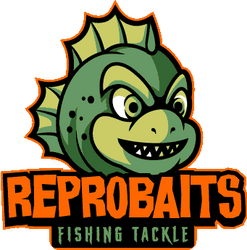
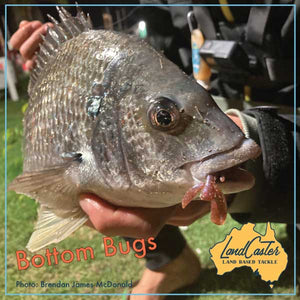
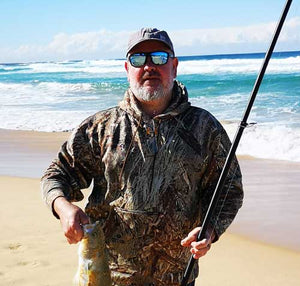
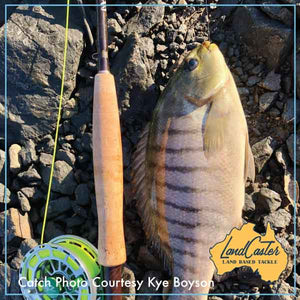
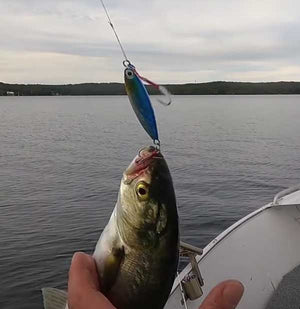
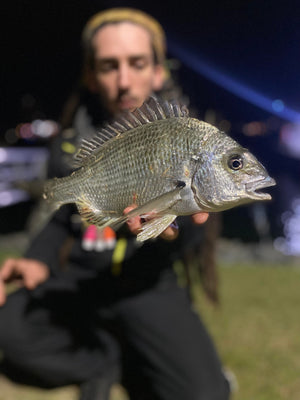
Leave a comment